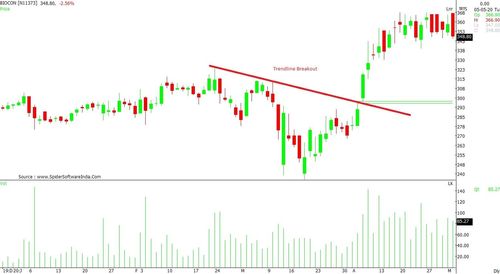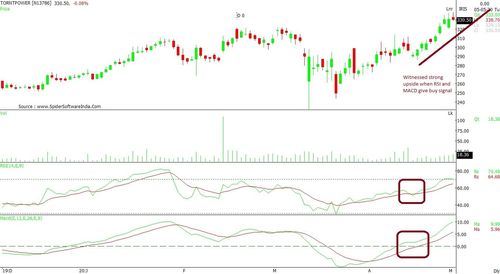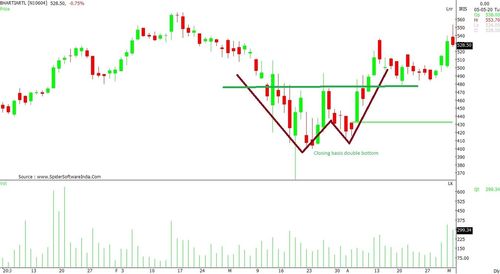Confused About When To Buy A Stock? Here's What You Need To Know
- 4m•
- 1,368•
- 08 May 2023
'Buy' signals are cues for a trader to enter/purchase a stock once the technical setup meets their condition to go long. In order to spot such opportunities, one needs to first gauge the overall trend by correlating different indicators and chart patterns with price momentum. Trend analysis is, thus, the core of identifying the momentum of a stock, and hence, any potential 'buy' or ‘sell’ opportunity. The analysis differs for intra-day, short-term, medium-term and long-term investments.
Here are some strategies for you to identify a 'buy' trade
Volumes:
The basic idea is to determine the underneath strength by analysing the volume structure. It is highly recommended to understand the relationship with of increase in volumes, average volume and low volumes with the price. Whenever there is sharp rise in volume accompanied by the price showing aggressive close or a large candle, the structure is said to be possessing a greater strength.
A Gap-up close price with above average volumes denotes a decent upside ahead and one can capture the positive bias. Similarly, increase in volumes for 2-3 straight sessions indicates the possibility of an upside when the overall trend supports the move.
Trendline Breakout:
A trendline breakout occurs when the price breaks out of the major resistance, indicating that the bulls are aggressively bidding for a price. Whenever such a scenario is supported by a strong close, it further confirms a positive trade. A trendline breakout on price usually targets the upside which may vary from 7 to 10 per cent on the daily time frame.

Moving Averages:
The various moving averages provide assistance in developing a short-to-medium term view. The major moving averages are 50-day moving average (DMA), 100-DMA and 200-DMA. The signal is identified on the basis of their positive convergence. The crossover of 50-DMA with 100-DMA or 200-DMA makes for the most suitable buy signal. One can develop shorter moving averages like 8-DMA, 11-DMA, 17-DMA, etc for identifying a buy trade in intraday sessions.
Technical Indicators:
The two major indicators for identifying a trade are Relative Strength Index (RSI) and Moving Average Convergence Divergence (MACD). The RSI determines the strength of the stock, whereas the MACD acknowledge strength, momentum, direction and duration of a trend. RSI determines the overbought and oversold conditions and MACD helps in highlighting a trend reversal on the positive crossover and a jump above the zero line. One can also correlate these indicators with price momentum to ascertain the stock upside.

Chart Patterns:
Bullish chart patterns like Inverse Head and Shoulder, Double bottom, Triple bottom, Cup and Handle, Ascending triangle and others can help one spot a potential upside. The 'buy' signal is confirmed upon the breakout above the neckline with respective targets as the difference of low price and the neckline level. The price will move aggressively once the neckline is conquered with the bulls, reinforcing positive sentiment, thus inducing greater volumes.






